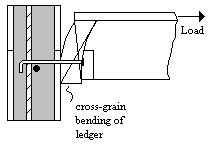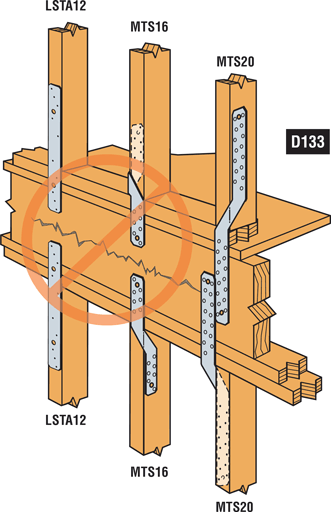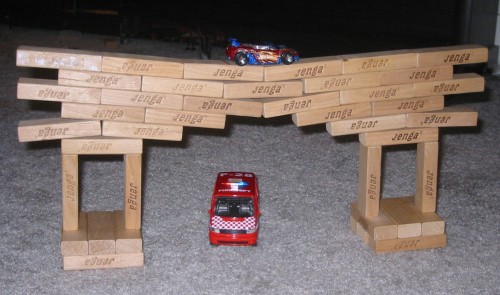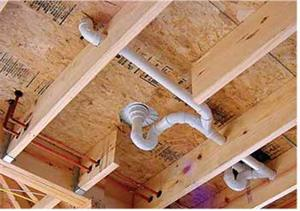Stress vs Grain Direction
longitudinal stresses (parallel-to-grain) are typical
cross-grain tension should be avoided (from a tension force, bending moment, etc)
source
sourcereference bending design values are only for longitudinal bending stresses
Span Length
1. clear span
2. center-of-support to center-of-support = nominal span length used in textbook
3. clear span + require bearing length (half at each end) = definition in NDS section 3.2.1
Bending Stress
ASD: fb = Mc/I = M/S ≤ F'b (CE 110 chapter 8)
LRFD: Mu ≤ M'n = F'bnS
Industry Vocabulary
bending moment around strong (x) axis
- loaded edgewise
- edgewise bending
- load applied to narrow face
- load applied ⊥ to wide face of lams
fbx and F'bx
bending moment around weak (y) axis
- loaded flatwise
- flatwise bending
- load applied to wide face
- load applied // to wide face of lams
fby and F'by
Mechanics Assumptions
- solid, homogeneous, isotropic material
- plane sections remain plane before/after loading
- linear, elastic relationship between stress and strain
F'b = Fb(CD)(CM)(Ct)(CL)(CF or CV)(Cfu)(Cc)(Ci)(Cr)
F'bn = Fbn(Φb)(λ)(CM)(Ct)(CL)(CF or CV)(Cfu)(Cc)(Ci)(Cr)
Reference Bending Design Values
Fb = Fbx = Fby for visually graded sawn lumber, except for beams & stringers and decking (use Cfu for Fby)
Fb = Fbx for beams & stringers (use CF to get Fby) (see textbook Example 6.4 and NDS section 4.1.7 for discussion on middle vs outer thirds of B&S lumber)
Fb = Fby for decking (already incorporates Cfu)Fbx and Fby are provided for glulams
F+bx and F-bx are needed when positive and negative moments exist on the same side of beam (or if beam is installed upside down)
Notches
stress concentrations
NDS section 4.4.3
- < 1/6 depth
- not in middle third of span
- etc
NDS section 5.4.4 for glulams



